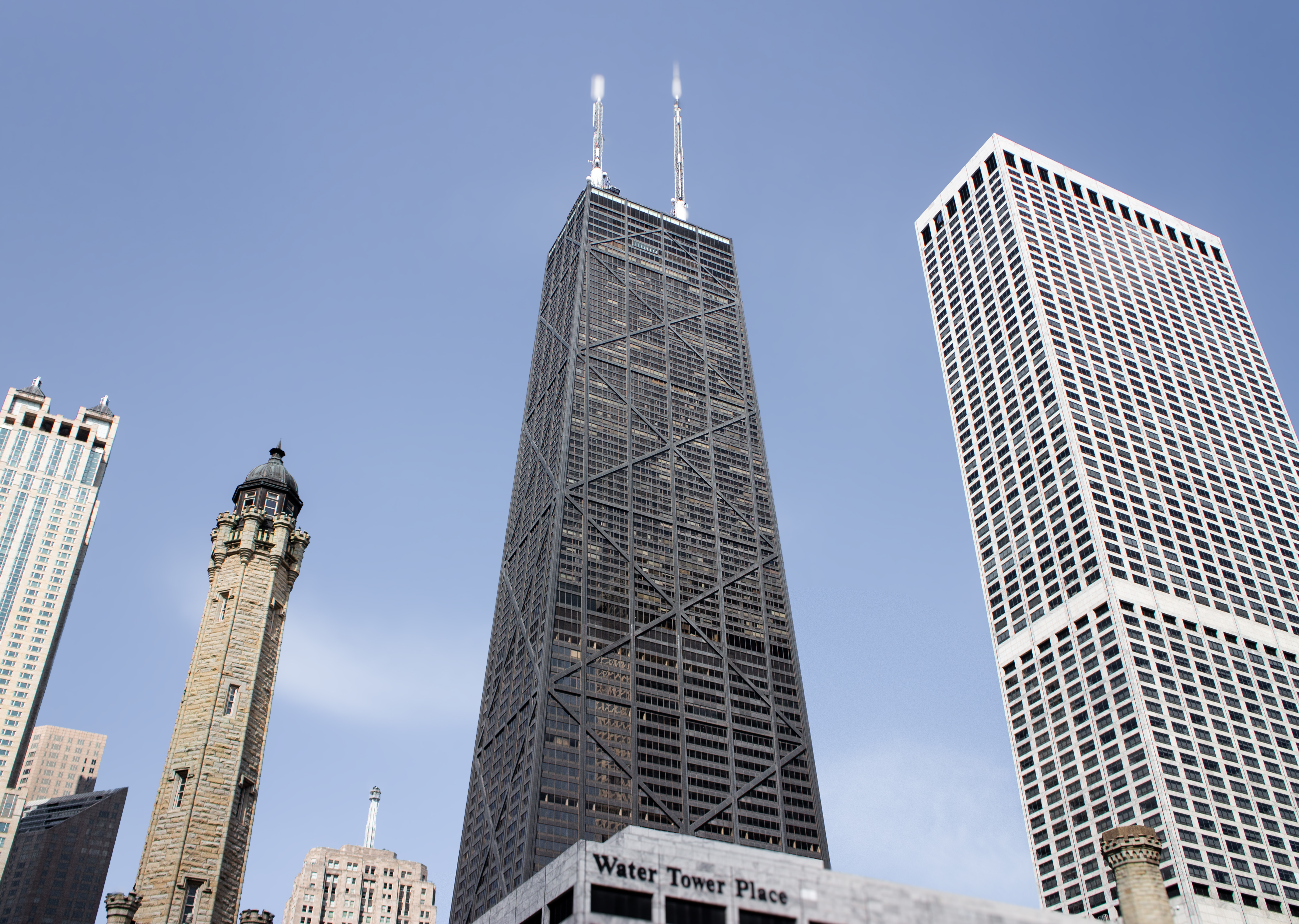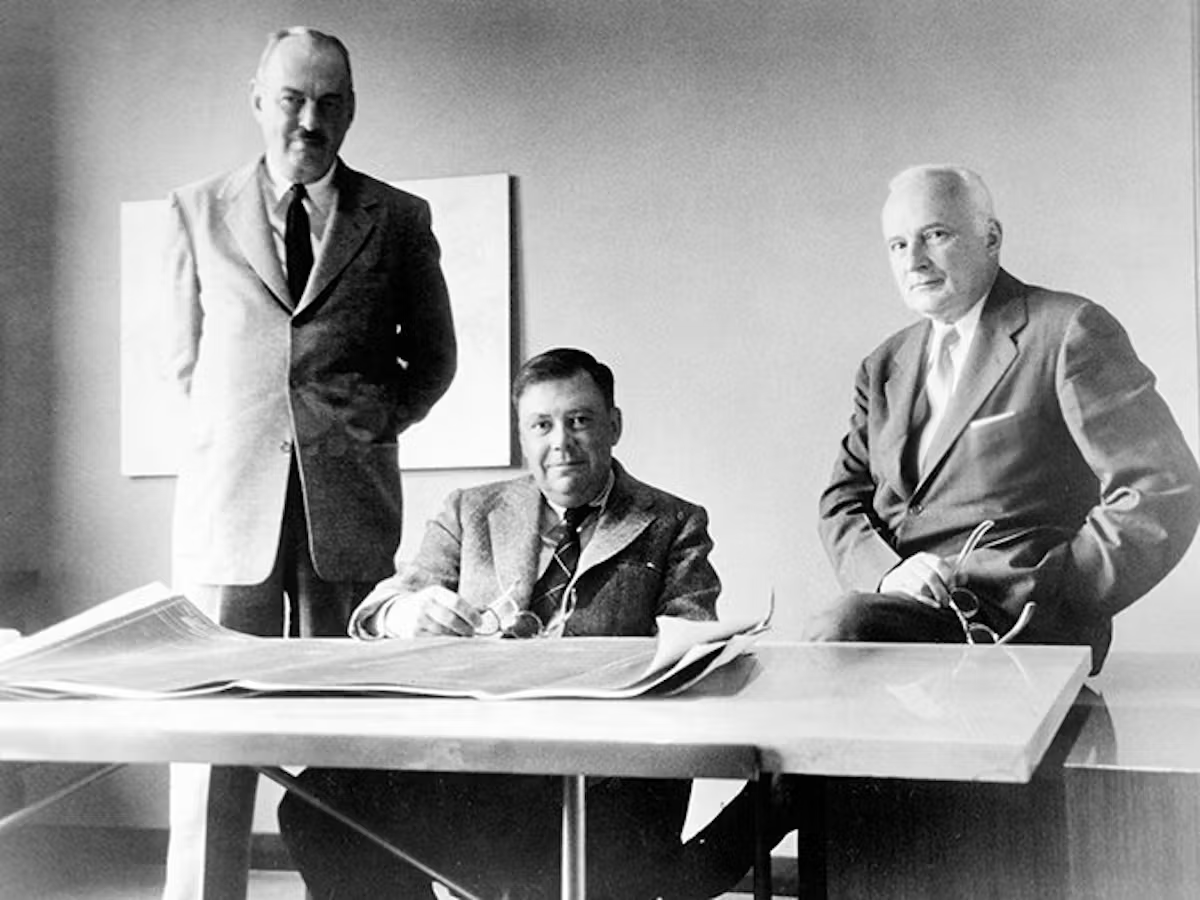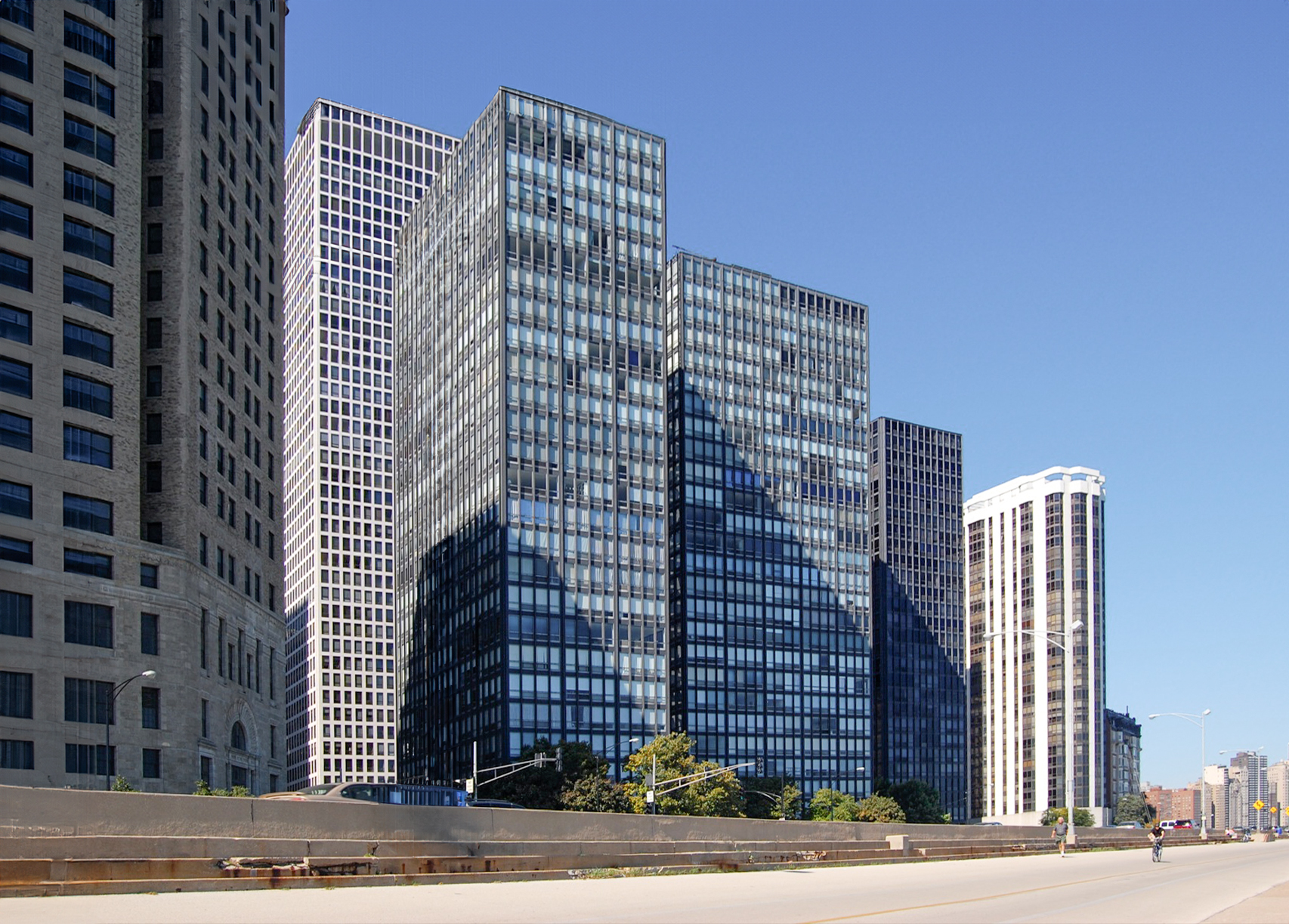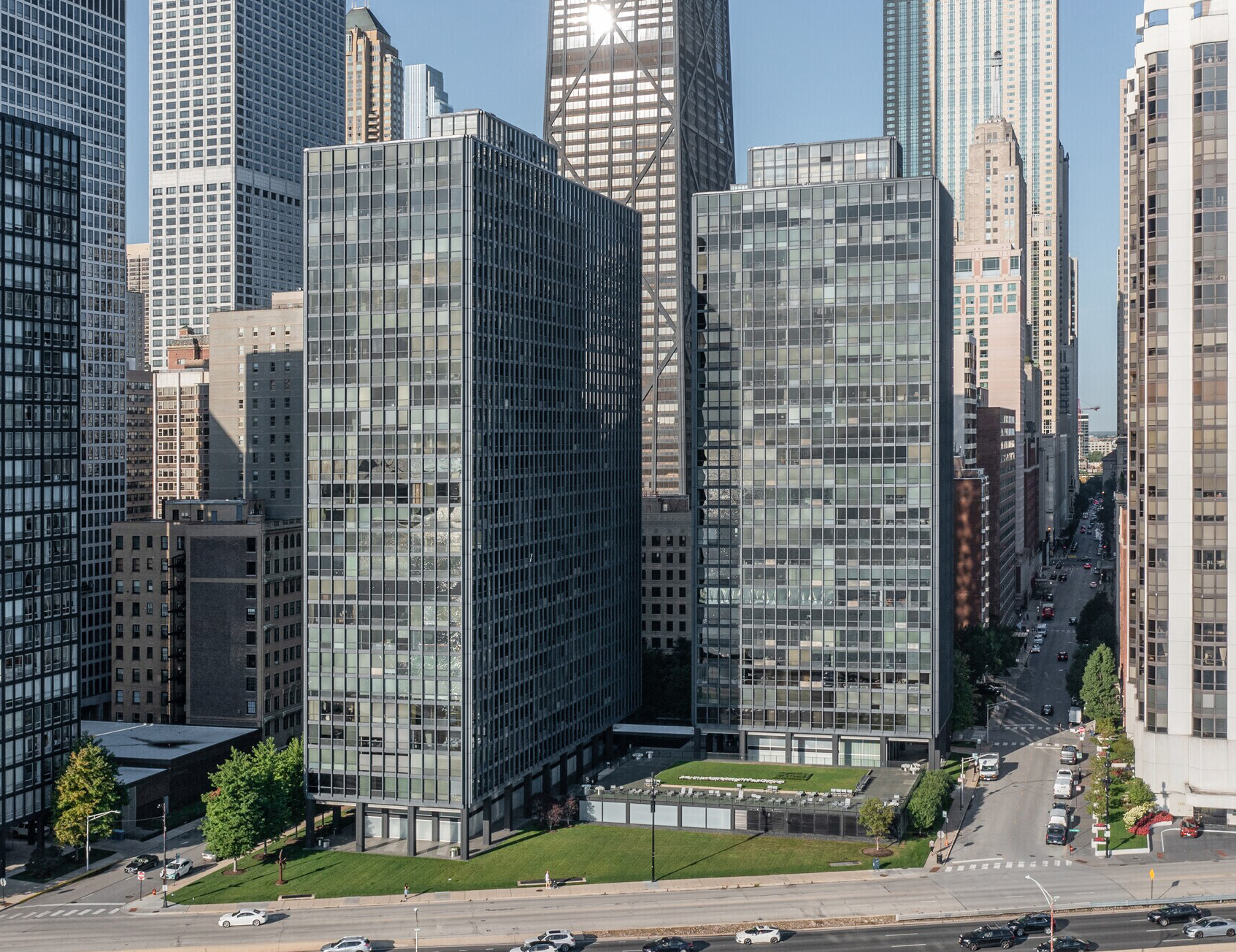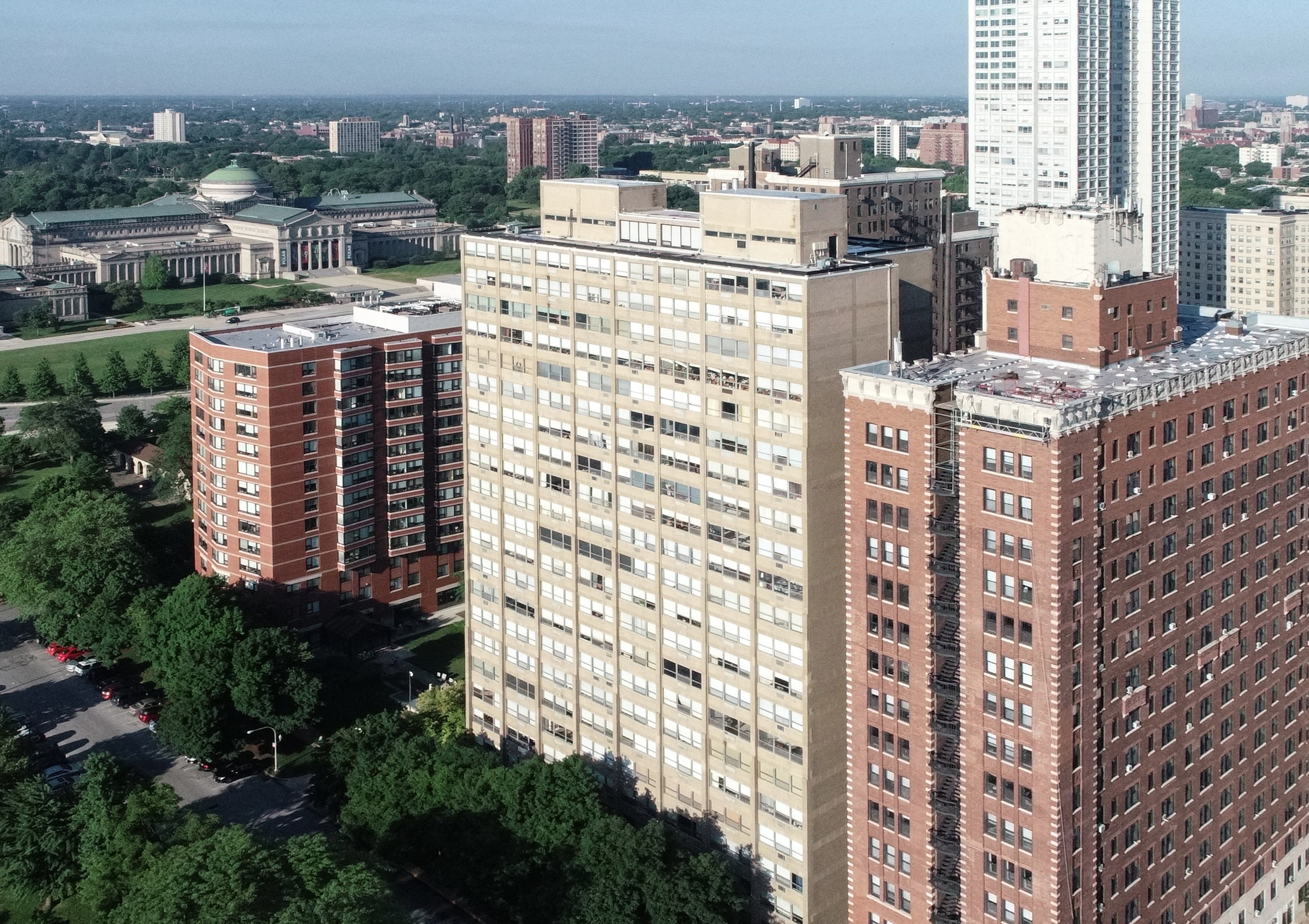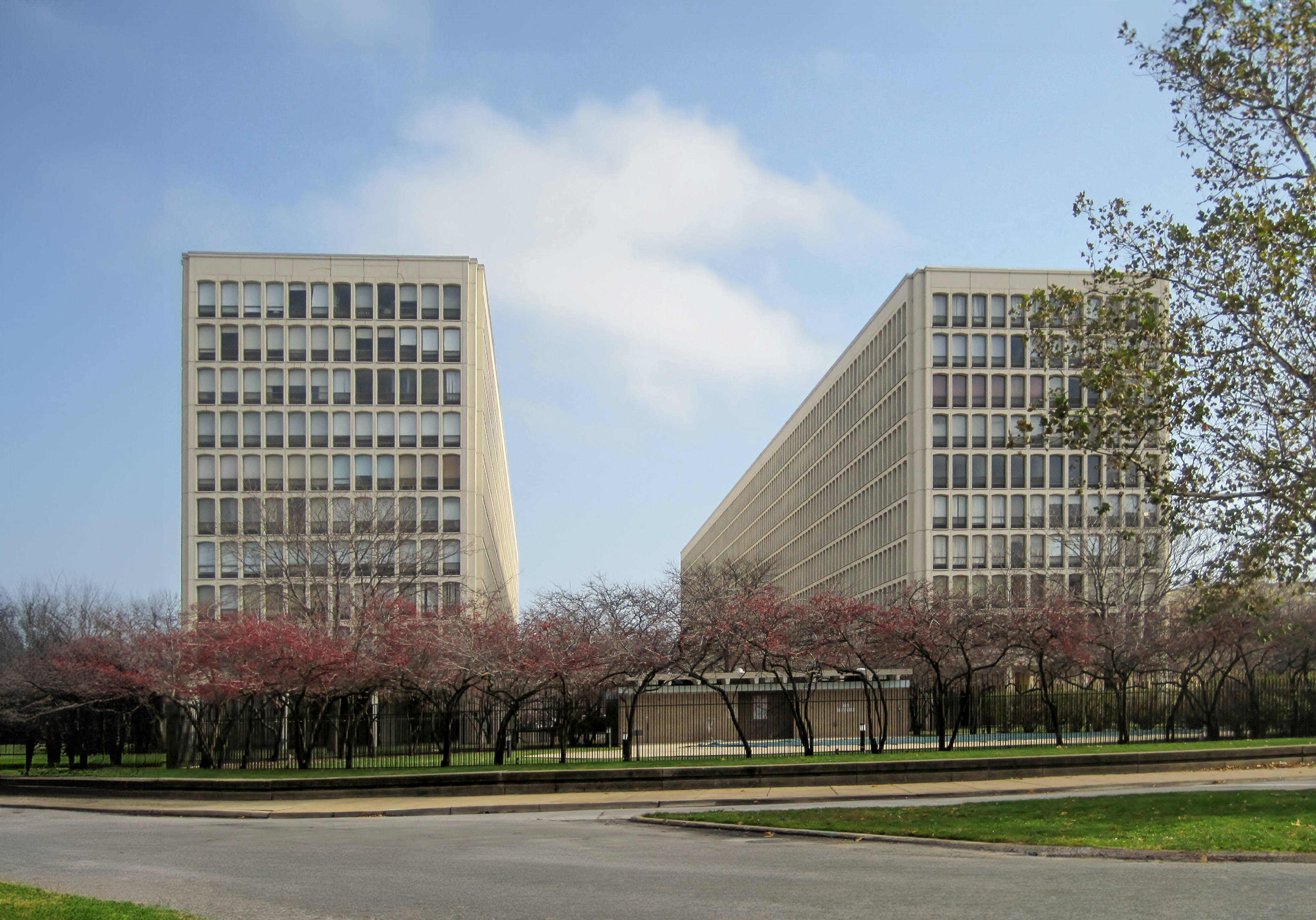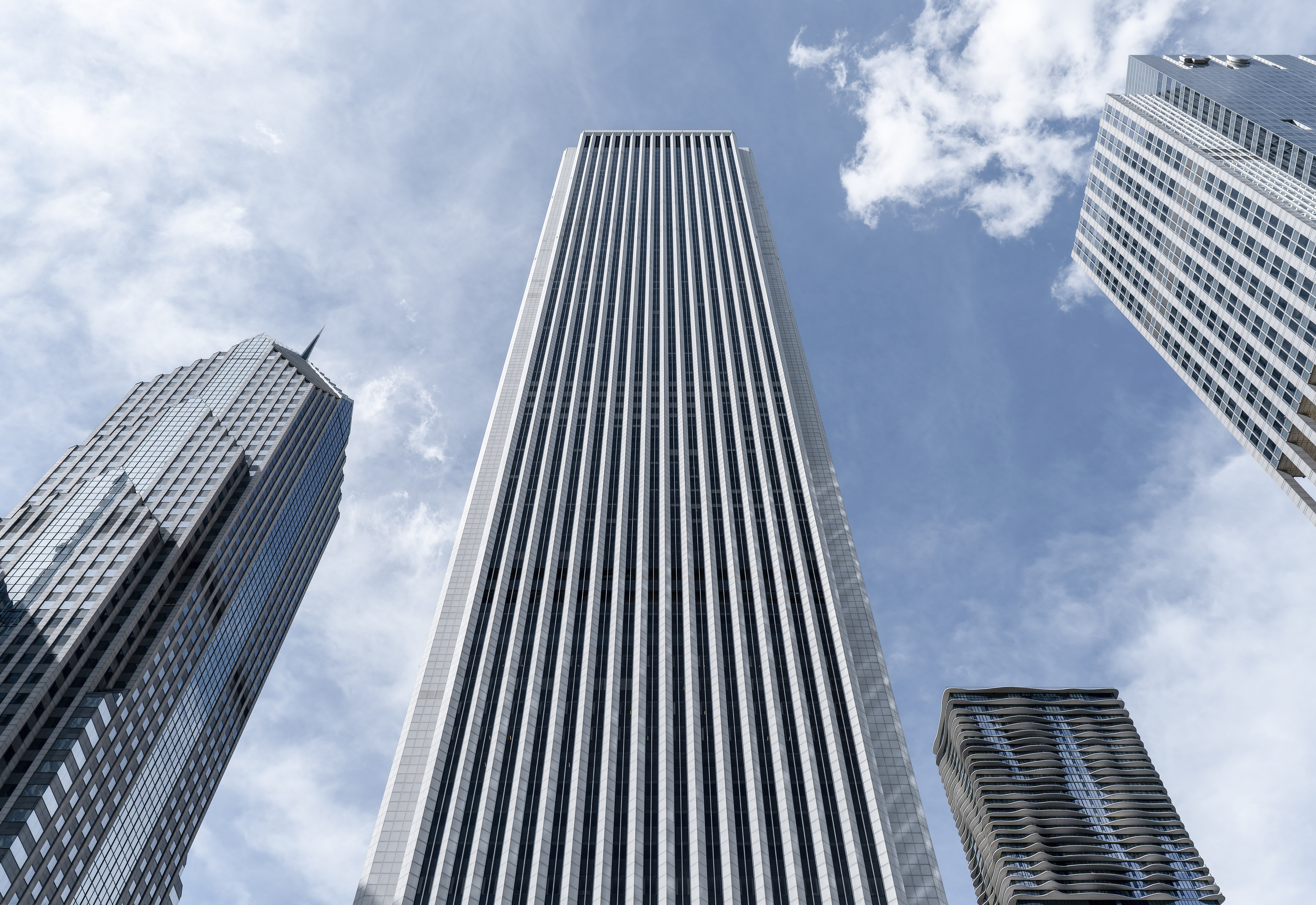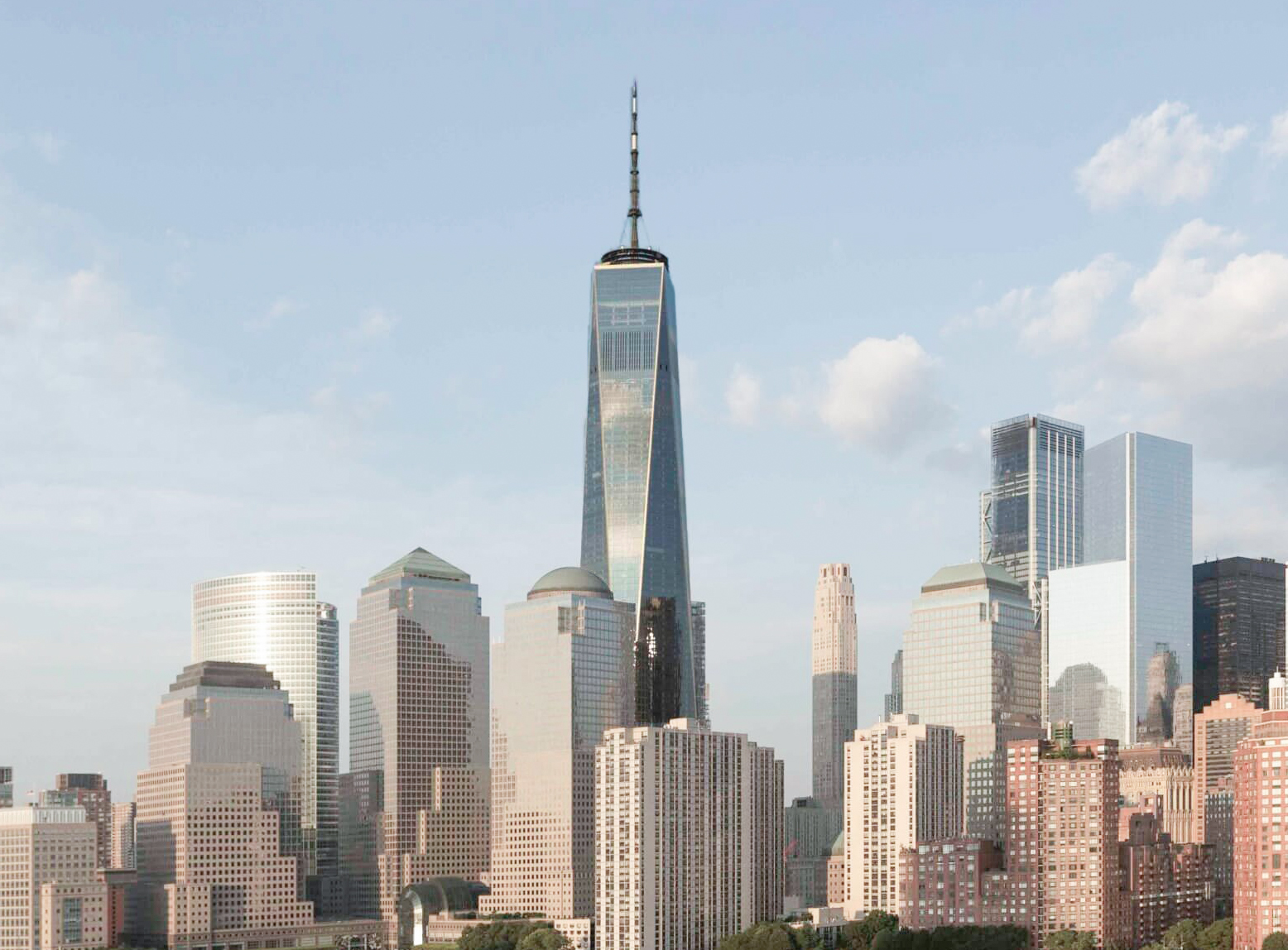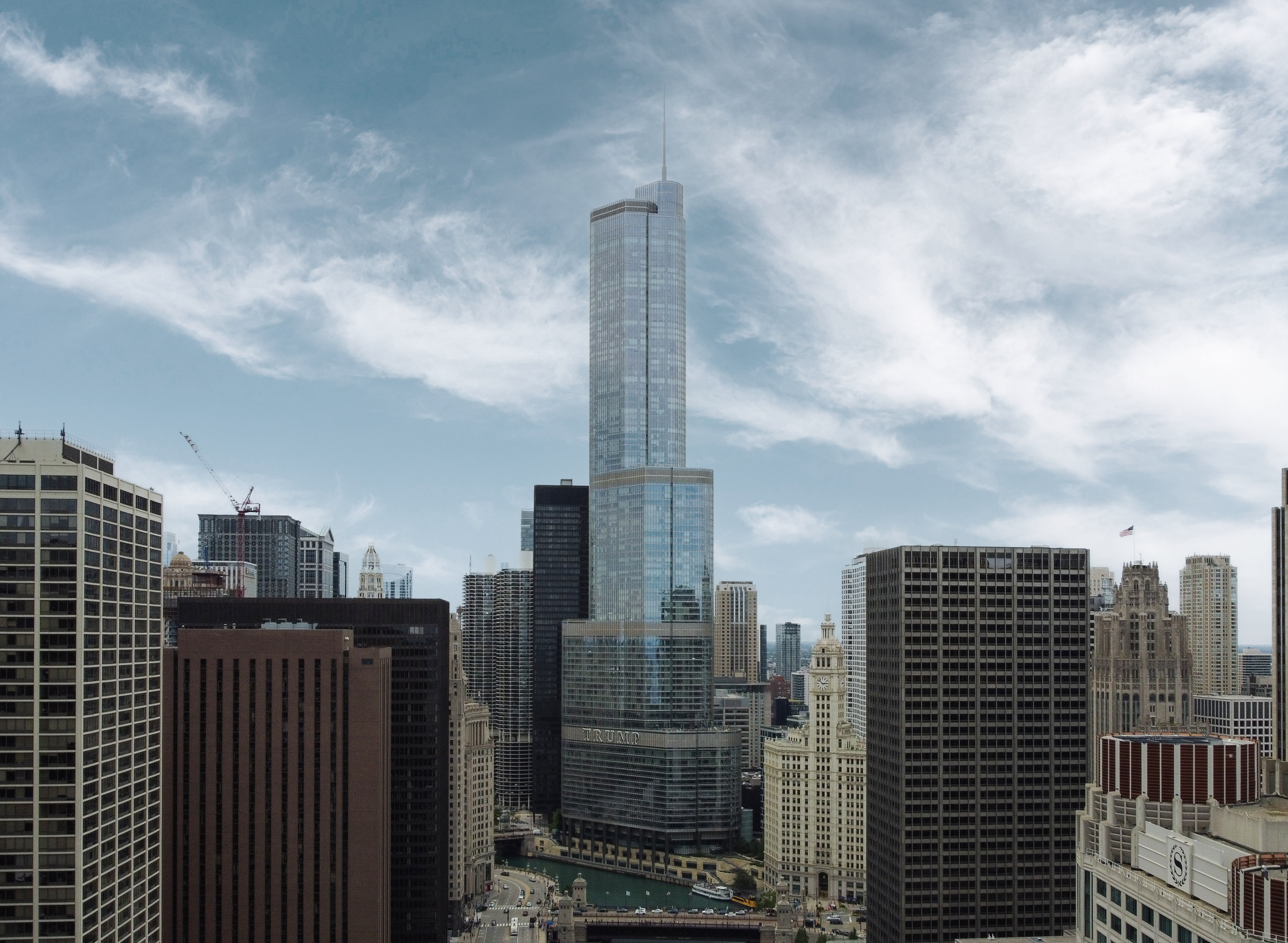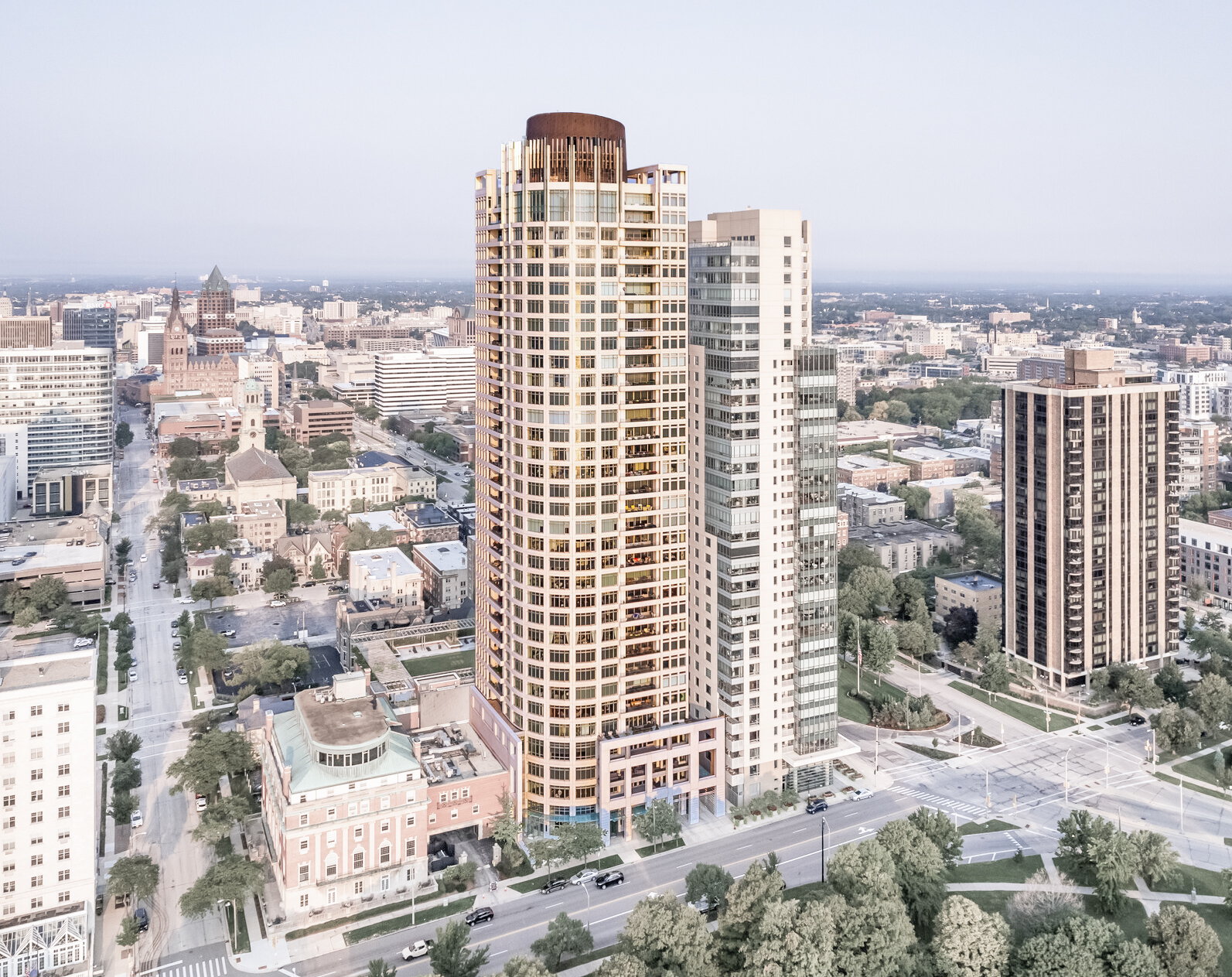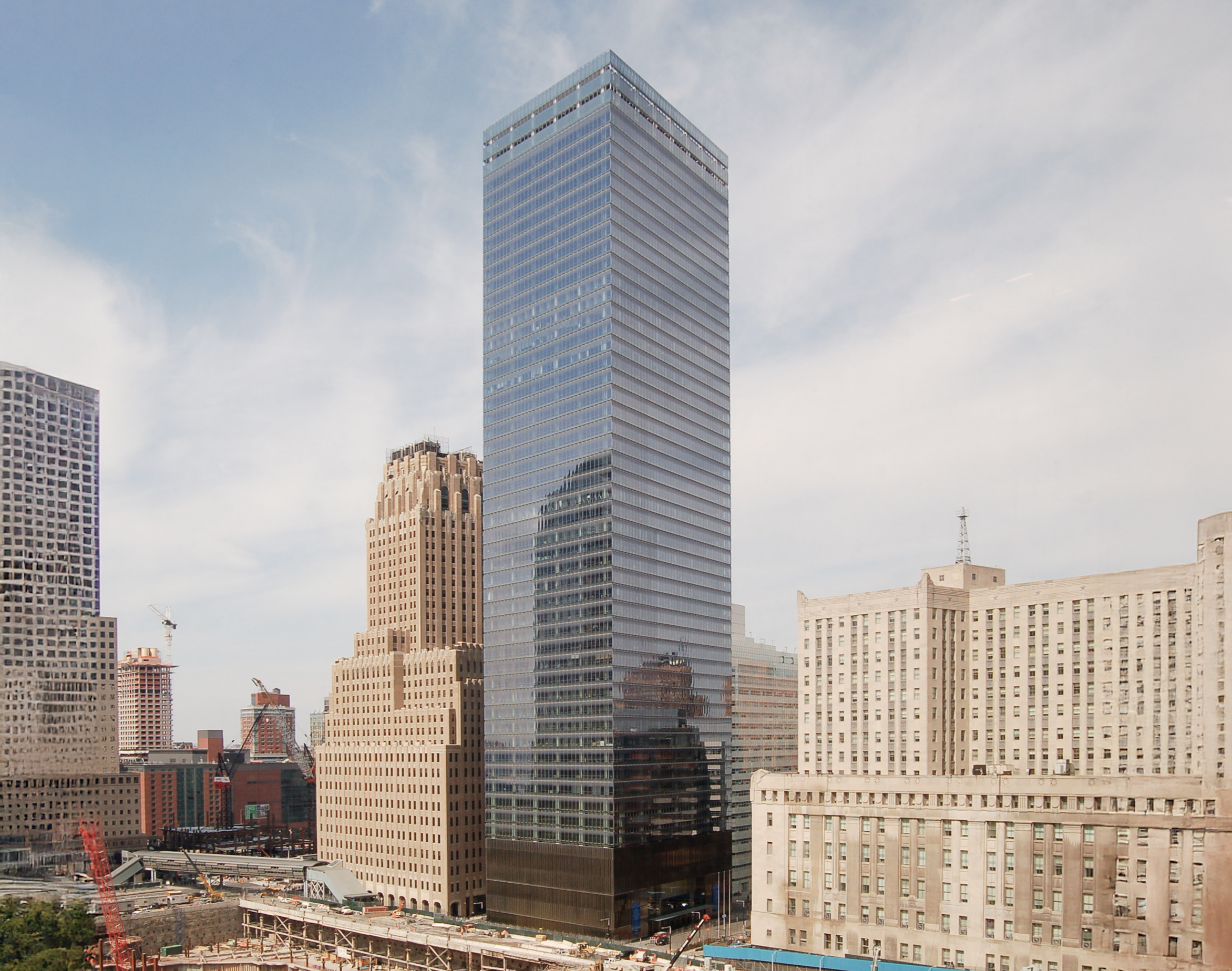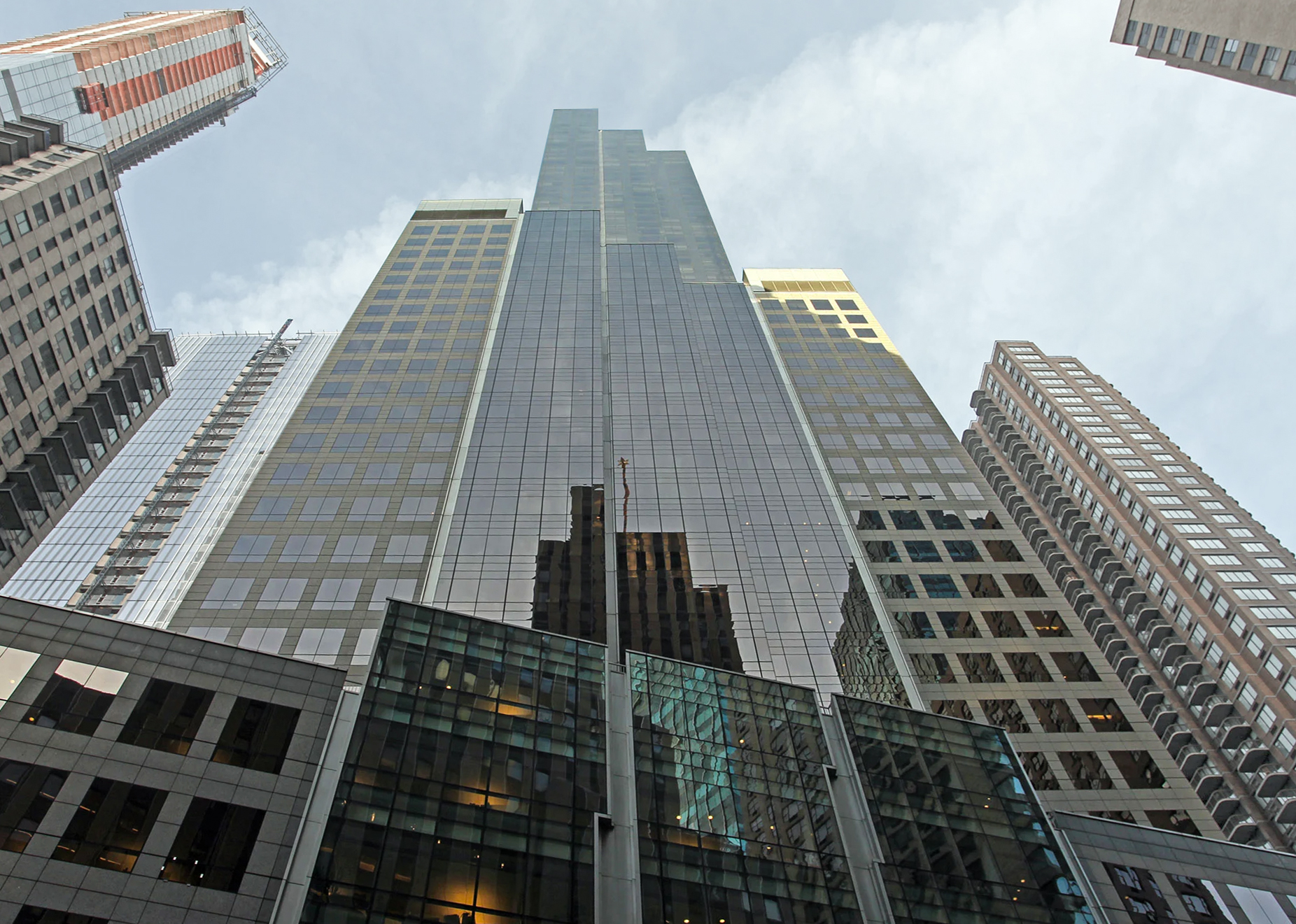The John Hancock Center is an International Style skyscraper designed by Skidmore, Owings & Merrill, with Bruce Graham as lead architect, and built between 1965 and 1969 in Chicago, IL.
John Hancock Center is not the only name you might know this building by though. It is common for companies to want to attach their names to iconic buildings when they move in, or for the general public to come up with nicknames, and this one is no exception. The building has changed names several times over the years, and is also known as:
- John Hancock Center between 1969 and 2018.
- 875 North Michigan Avenue from 2018 until this day.
Its precise street address is 875 North Michigan Avenue, Chicago, IL. You can also find it on the map here.
The building is one of the most famous examples of structural expressionist architecture, and one of the most iconic landmarks in Chicago's skyline.
The silhouette of the building is that of a truncated pyramid, which makes the Hancock Center one of the most distinguishable buildings not only in Chicago's skyline, but in the world.
Private access to the condominiums is provided through a separate entrance at 175 Delaware.
The building underwent a major restoration in 1995.
